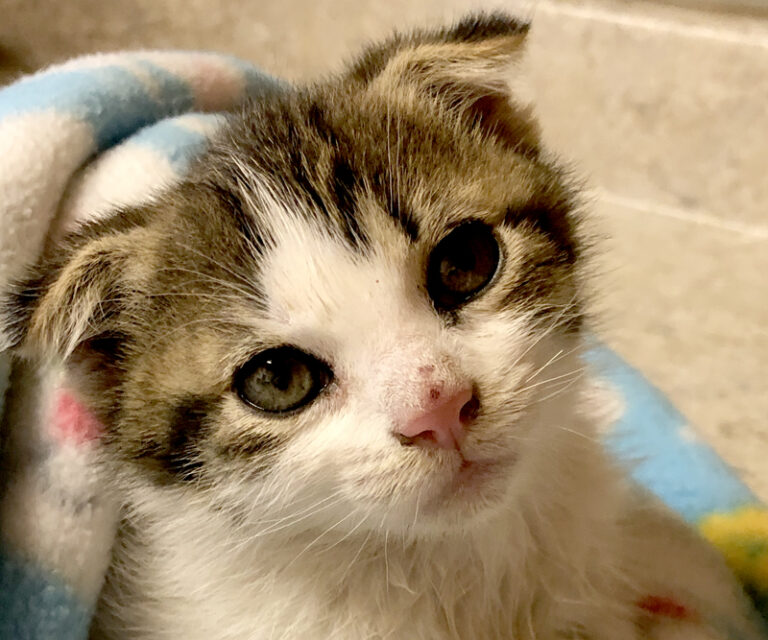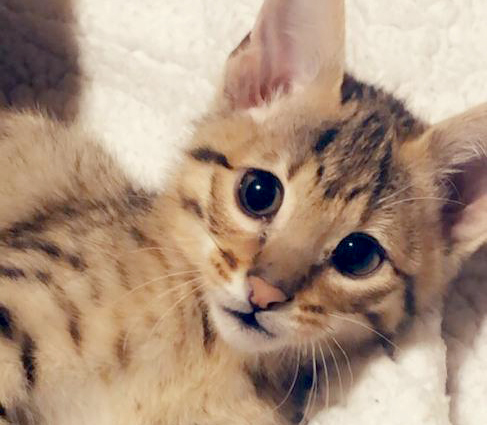Cerebellar hypoplasia
Cerebellar hypoplasia (CH) occurs when parts of the cerebellum are not completely developed. The cerebellum is part of the normal animal brain, and makes up a large portion of the brain’s matter. The cerebellum lies under the cerebrum and toward the back, above and behind the brainstem. This condition can occur due to intrinsic (genetic) causes, or due to extrinsic causes like infections, toxins or nutritional deficiencies. Symptoms are visible when kittens begin to stand and walk, around six weeks of age.
Symptoms
- Head bobbing
- Limb tremors
- Aggravated by movement or eating
- Disappear during sleep
- Unsteadiness or clumsiness with a wide-based stance
- Unable to judge distance and disequilibrium:
- Falling, flipping over
- Slight improvement may occur as patient accommodates its deficits
Causes
- Usually transplacental or perinatal infection
- Parvovirus, which selectively attacks rapidly-dividing cells in the external layer of the cerebellum at birth and for two weeks postnatal
Animals affected with cerebellar hypoplasia will usually show signs at birth or shortly thereafter. Kittens may show a slow progression of symptoms over the course of weeks or months. After the final postnatal (infant stage) onset of cerebellar hypoplasia, your kitten should not show any further progression of signs of this disorder. Age, breed, family or health history, and typical non-progressive symptoms are usually sufficient for a tentative diagnosis.
Treatment and Management
There is no treatment for cerebellar hypoplasia. While this condition is permanent, the symptoms should not worsen and affected cats will have a normal life span.
Your cat will be developmentally disabled, so the animal will not be able to make decisions to protect itself as other cats are able to. You will need to restrict your cat’s activity and movement so as to prevent injuries. Climbing, falling, or freedom of movement, all of the normal things that cats do, will need to be taken into consideration with your cat.
It is imperative that the animal is not allowed to free roam outside. A CH cat would not be able to protect himself against predators, vehicles, or other dangers.
Article from: ©1999-2019 petMD, LLC. All Rights Reserved


